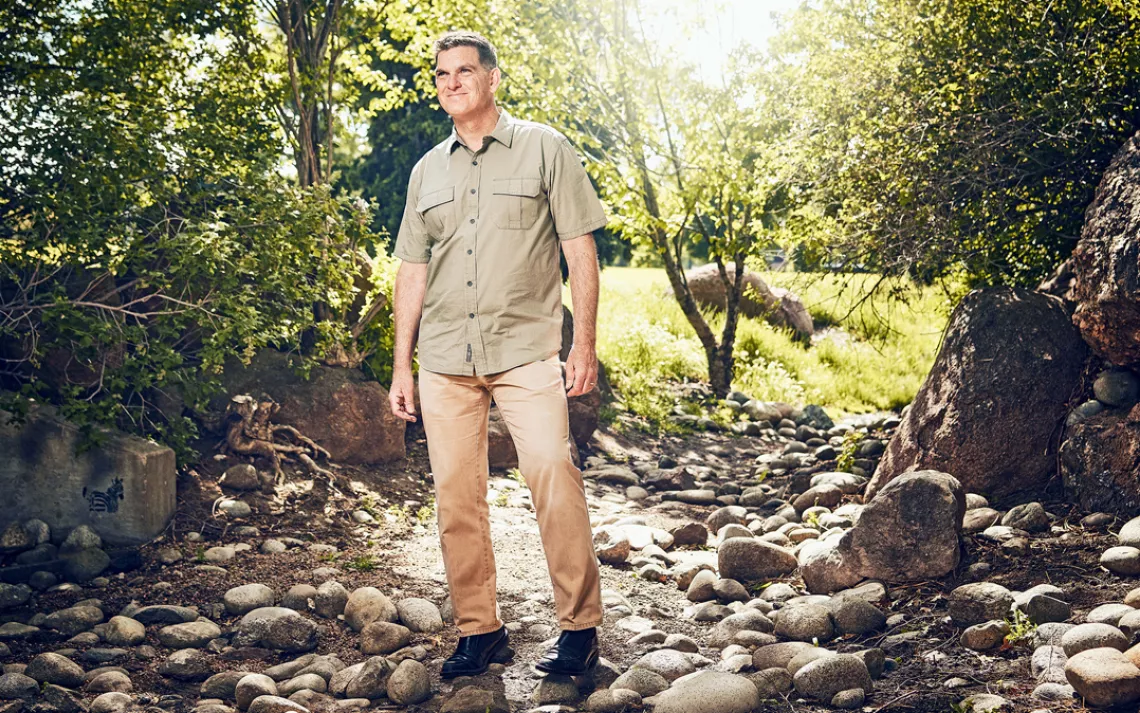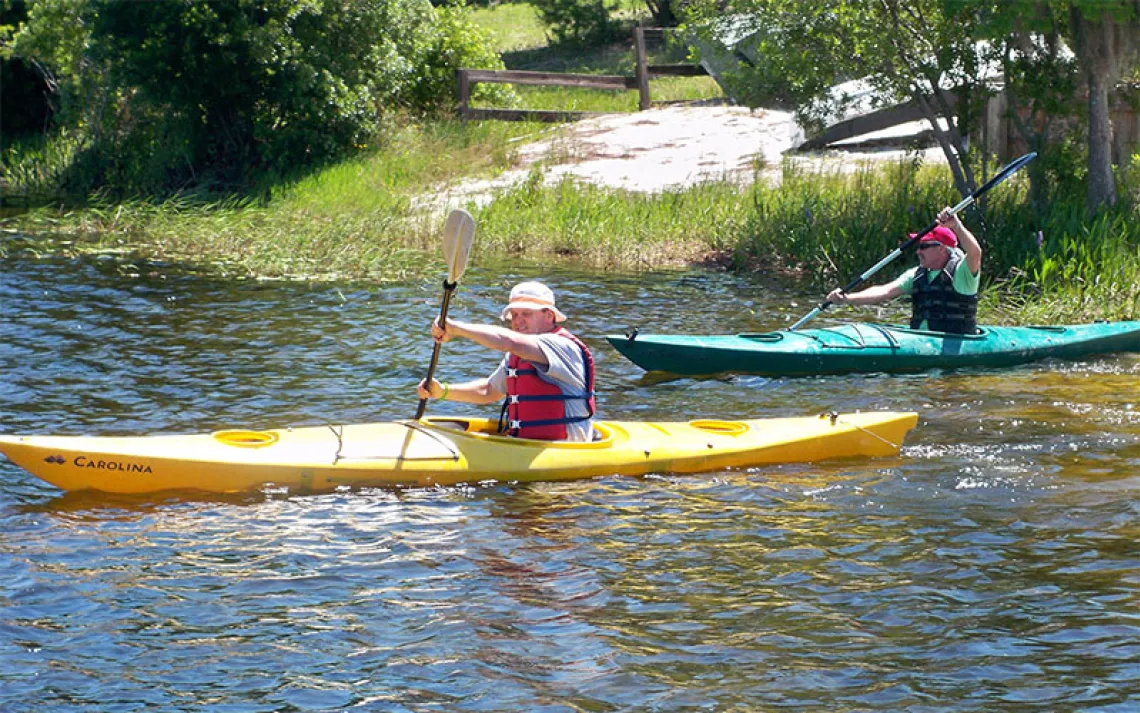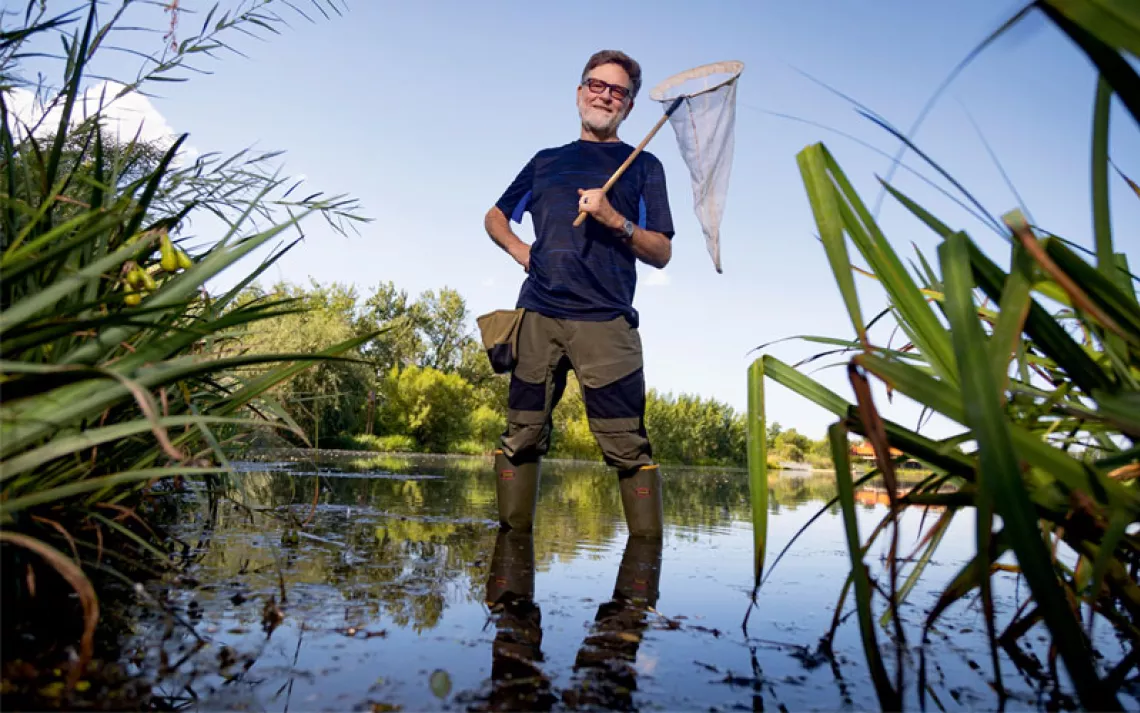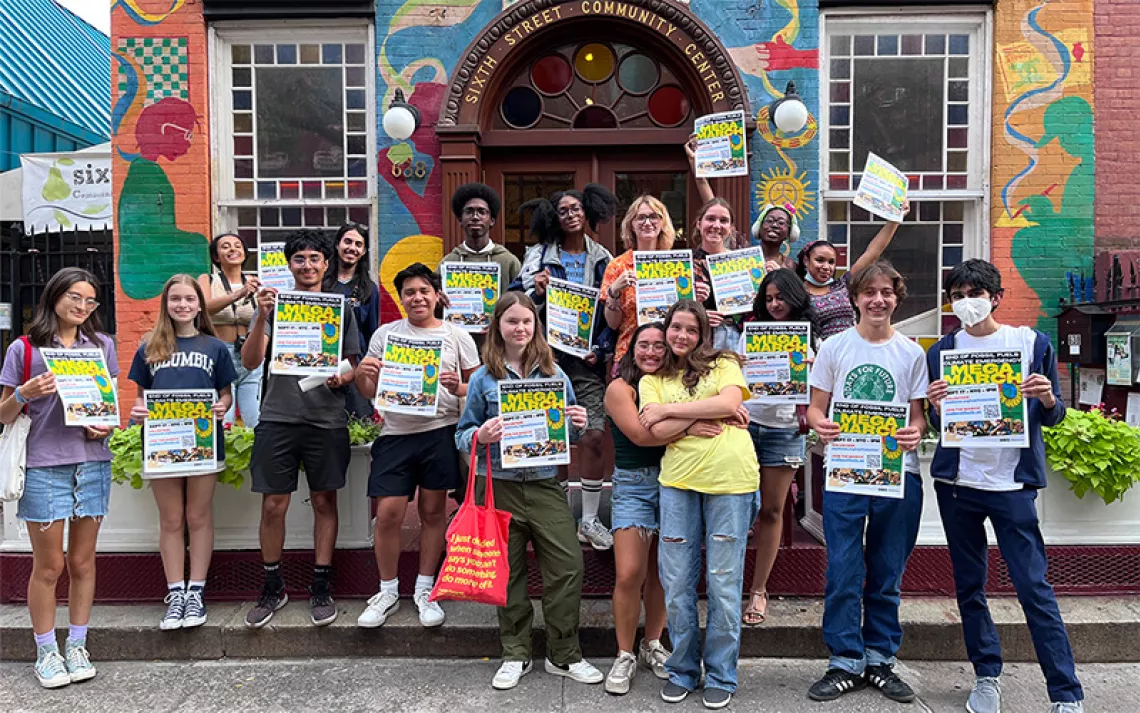ENVIRONMENT EXPLAINED
Scott Sampson Wants Parents to Rewild their Kids
The paleontologist from the PBS series Dinosaur Train worries that outdoor playtime is going extinct

Paleontologist Scott Sampson (from the TV show Dinosaur Train) wants kids to go outside. | Photo by Willie Petersen
Read the full Q&A with Dr. Scott Sampson.
When an executive from the Jim Henson Company approached Dr. Scott Sampson in 2008 about hosting a new animated PBS series called Dinosaur Train, Sampson was worried. "I said, 'I'm always trying to convince people that humans and dinosaurs didn't live at the same time. You can't put them on trains together!' She told me, 'We're only going to put dinosaurs on the train.' And I thought, 'That's brilliant. That's chocolate and peanut butter when you're five years old.'"
The program debuted in 2009 and airs daily in more than 100 countries to a vast, rapt audience of little faces. Sampson appears in each episode to talk science and say his famous tagline: "Get outside, get into nature, and make your own discoveries!"
He's the first to acknowledge the inherent contradiction in promoting outdoor time from the platform of television. When he signed on to the show, he considered it an untried experiment—one that he believes has now been vindicated. He's heard from hundreds of parents and children who say they enthusiastically follow his advice.
To Sampson, children's lack of exposure to nature is one of the most overlooked crises of our time. "Most scientists say that climate change and species extinction and habitat loss are the most pressing issues, but if people don't feel a strong connection to nature right where they live, they're not going to change their behavior."
The statistics are dire: The average American child spends four to seven minutes a day playing outdoors and up to seven hours a day staring at a screen. Diabetes, attention deficit disorder, heart disease, depression, myopia, allergies, and asthma have all skyrocketed, Sampson says, in part because children are spending too much time indoors.
In 2015, Sampson published How to Raise a Wild Child: The Art and Science of Falling in Love with Nature (Houghton Mifflin Harcourt). "We need to think of nature connection not as a leisure option but as an essential skill, like literacy," he says. He points to the factors keeping kids indoors—overscheduled lives, the allure of technology, fearful parents. As a father, Sampson has struggled with all of these. He finally realized that if he wanted his now-teenage daughter to spend more time in nature, he needed to schedule it in advance. "I'd say, 'OK, Saturday morning, we're going to the park to wander around and look for birds.'"
His advice for parents? "Commit to getting your kids out in nature for a minimum of 30 minutes three times a week. And while they're there, try to be less of a helicopter parent and more of a hummingbird parent—zoom in when necessary, but otherwise, stay out of the way. Stop saying things like 'Don't pick up that stick. Don't throw that rock. Stay out of the mud!' Nature connection is a contact sport."
Sampson, who spent his own childhood roaming the woods of Vancouver, finds hope in the fact that it only took one generation to get where we are now. In other words, the trend away from outdoor play is reversible. "Connecting kids with nature is easy," he says, "and for the most part, it's free. You don't need to be an expert."
This article appeared in the September/October 2016 edition with the headline "Rewilding the Kids."
 The Magazine of The Sierra Club
The Magazine of The Sierra Club



